From using WhatsApp as your own cloud storage service to using it on your PC, we've got loads of handy tips for you.
WhatsApp is the world’s most popular instant messaging app, getting a steady stream of updates, offering a long list of features, and supporting a wide range of devices. There’s little wonder why it’s got over a billion users, although last year’s privacy changes have driven many people to alternatives.
Nevertheless, here are a few essential WhatsApp tricks you should use to get the most out of the platform.
How to create bold, italicized, or strikethrough text
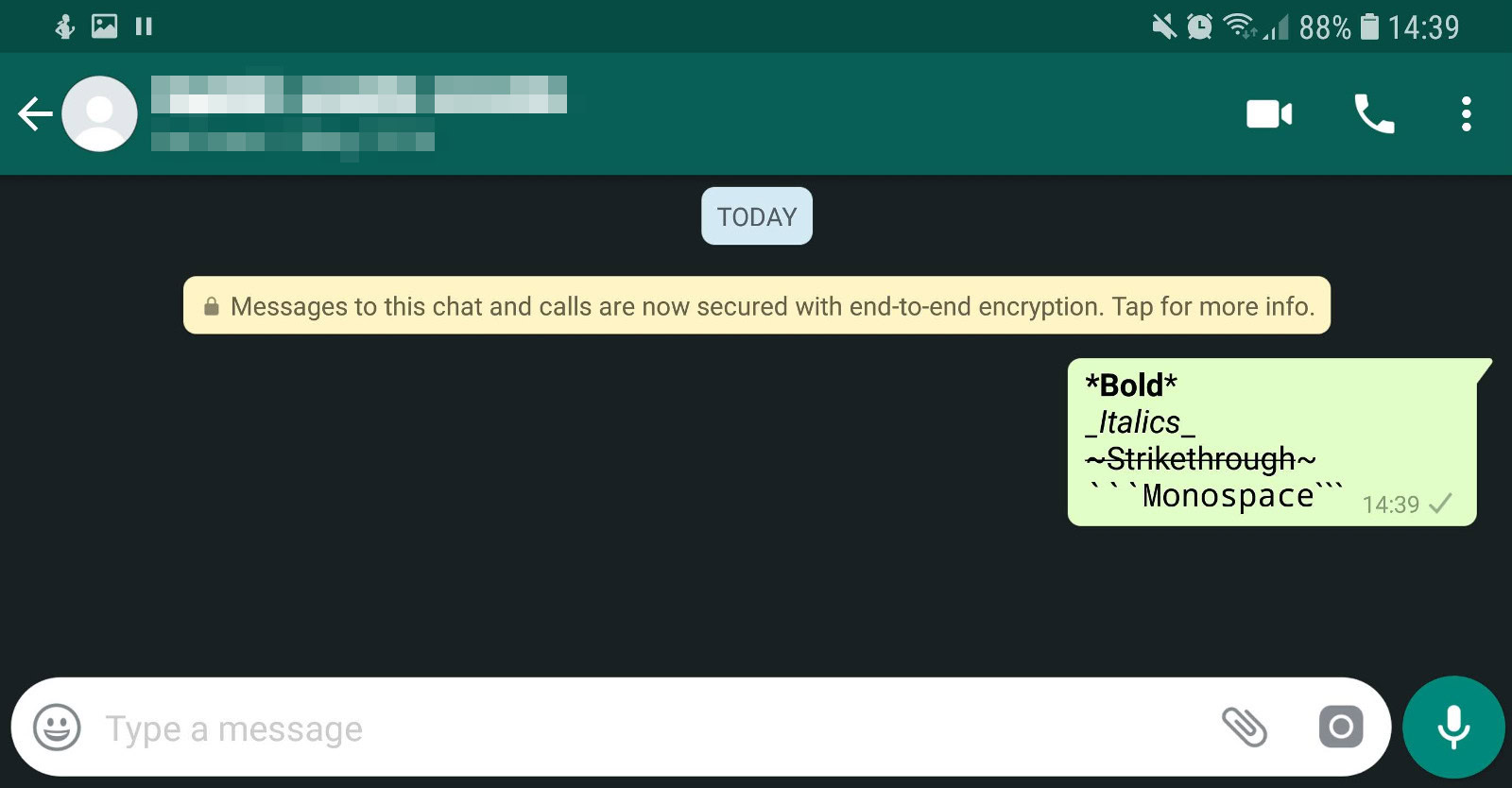
It’s been around for years now, but you’d be surprised how many people don’t know about this neat WhatsApp trick.
Simply put an asterisk (*) at the beginning and end of the desired word or sentence, and you can make it bold. So if you’d like to bold the word ‘biscuit,’ you’ll need to type *biscuit*. The same goes for italics, only with an underscore (_) on either side of the desired text instead. To strike through text, you’ll need to add a tilde (~) to the beginning and end of the desired passage. There’s also an option to create monospace text by adding three grave accents (`) to either side of the text.
Want an easier way to do all this? Then highlight the word or passage in question, tap more and choose from bold, italicize, strikethrough, or monospace.
Quote a message in your response
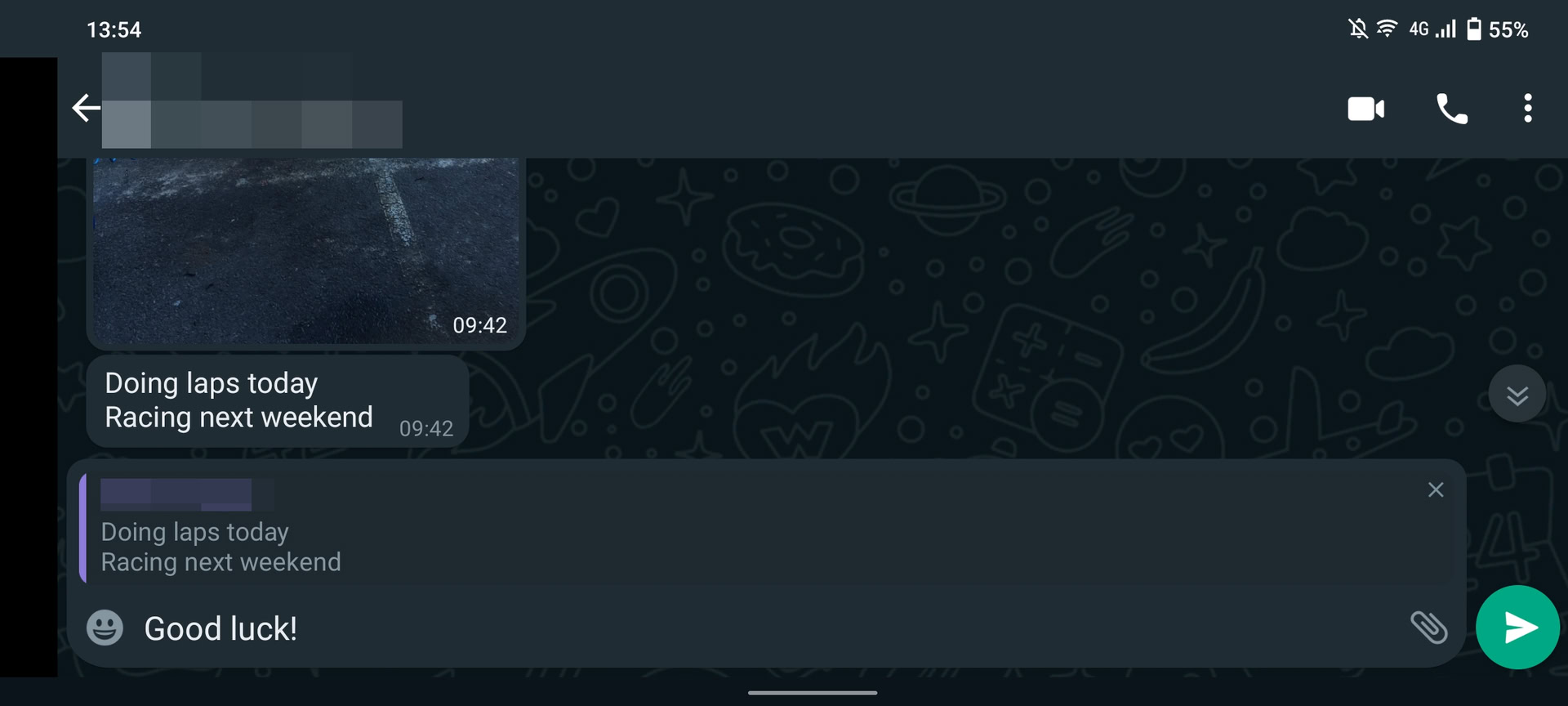
Whether your texting pace is just too fast or a group chat constantly sees new messages, quoting is one of the best ways to manage context.
To quote someone, hold down on a message and tap the arrow icon next to the star icon to attach it to the text field for quoting (as seen above). Alternatively, you can swipe right on the desired message, and it will appear at the top of the text field, ready for you to quote.
Stop auto-downloading via mobile data
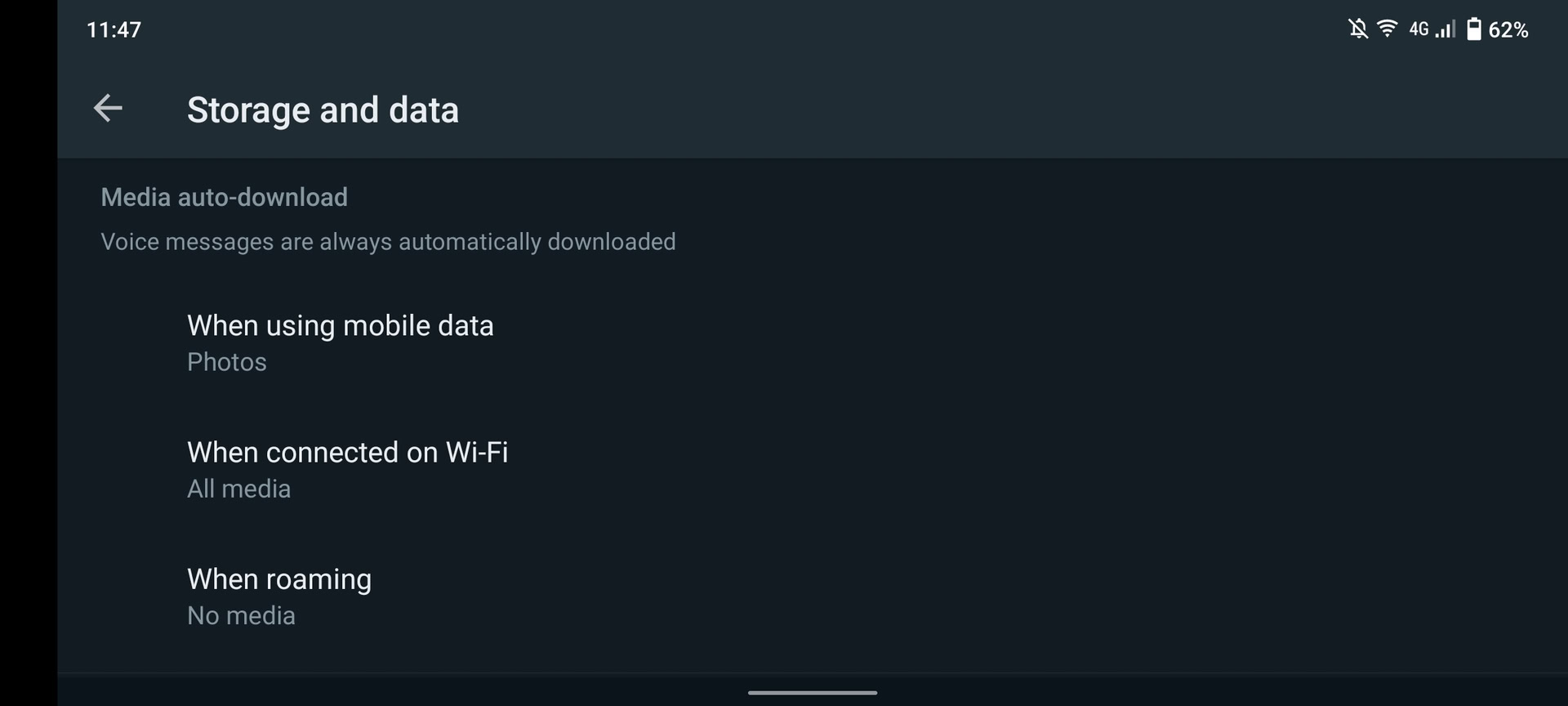
One of our favorite WhatsApp tricks can help you save precious mobile data. There are a few ways to save data in WhatsApp while still receiving notifications and messages. First, disable the app’s ability to download media on mobile data. This is done via Settings > Storage and data, then scrolling to the Media auto-download field.
More data-saving coverage: The best data-saving apps for Android
From this section, you can choose what gets downloaded when you’re on mobile data, Wi-Fi, or roaming. For example, you can set it so that only audio files and voice notes are sent over mobile data. Videos, in particular, are huge data hogs, so we’d recommend leaving this unchecked for mobile data unless you’ve got a sizeable cap.
WhatsApp calls chewing data? Try this
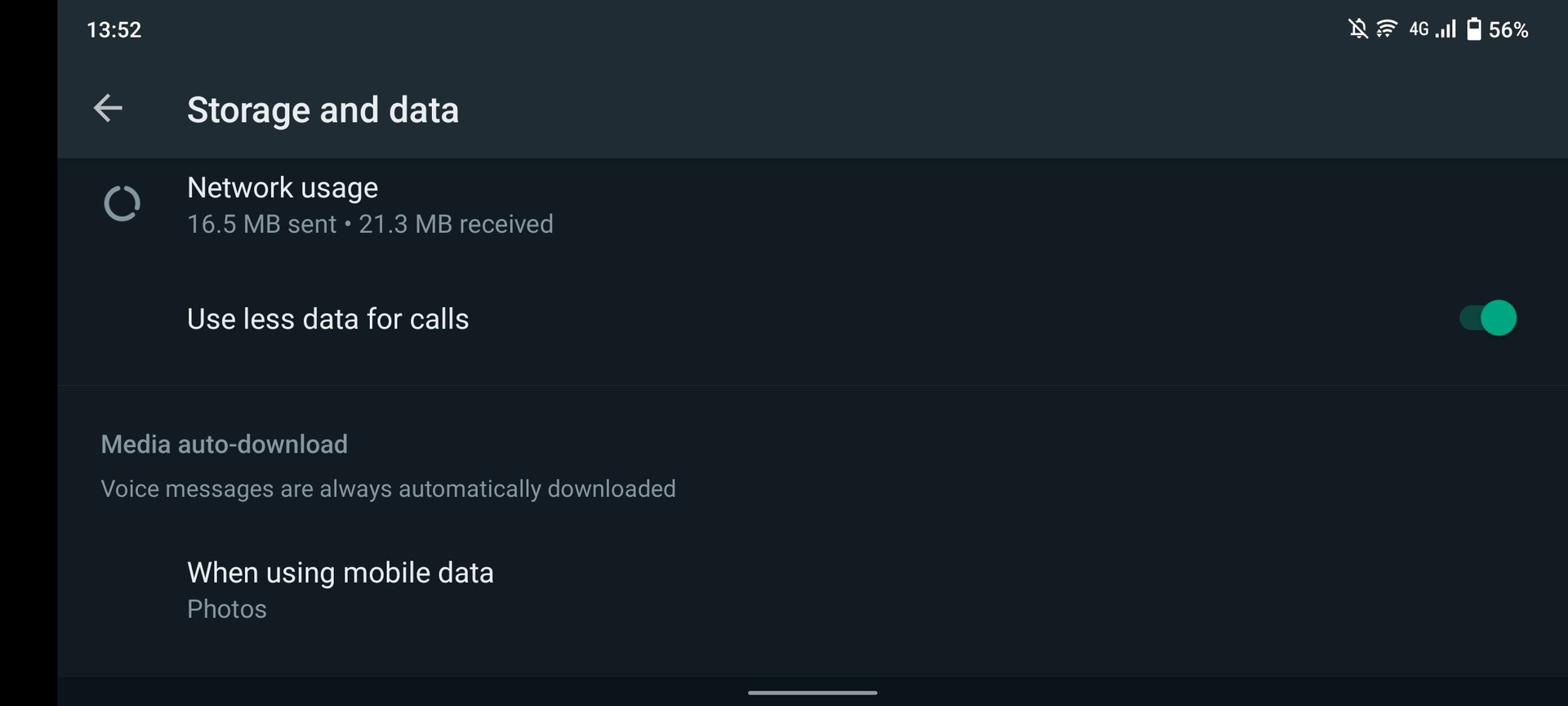
WhatsApp calls are a handy feature on the platform, and they don’t consume a lot of mobile data. Still, if you find yourself in need of saving mobile data, you can visit Settings > Storage and data, and then enable the Use less data for calls toggle.
Get a breakdown of WhatsApp data usage
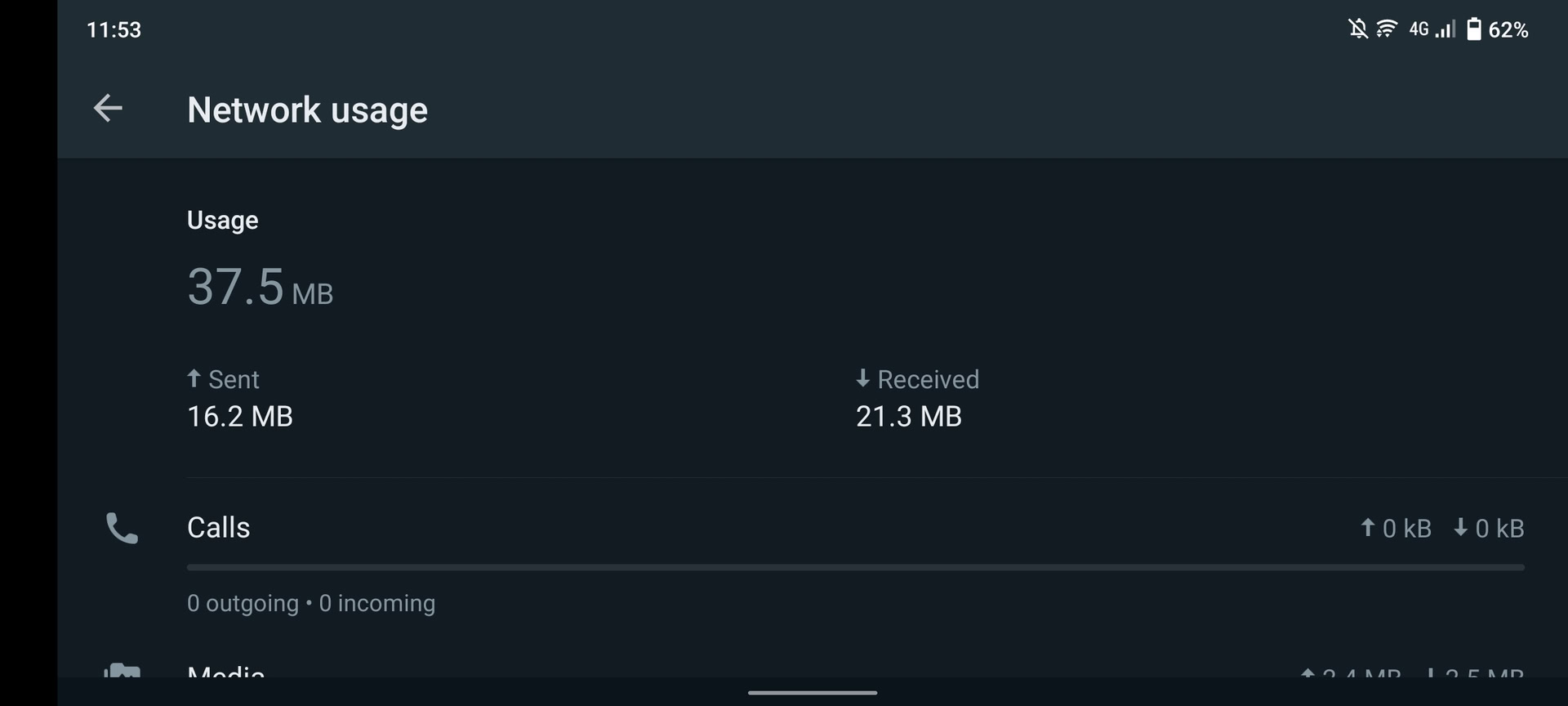
All Android phones from the last six or seven years ship with a data usage tracker, allowing you to get an app-by-app breakdown of data usage. But WhatsApp also has an integrated tracker, giving you a category-by-category look at data usage.
To access WhatsApp’s data usage log, you’ll need to visit Settings > Storage and data > Network usage. Here, you’ll find data usage related to Google Drive, roaming, WhatsApp calls, status updates, messages, media, and overall usage. The biggest downside is that there doesn’t seem to be a Wi-Fi versus cellular breakdown — it all gets lumped into the same category.
View a breakdown of storage by contact
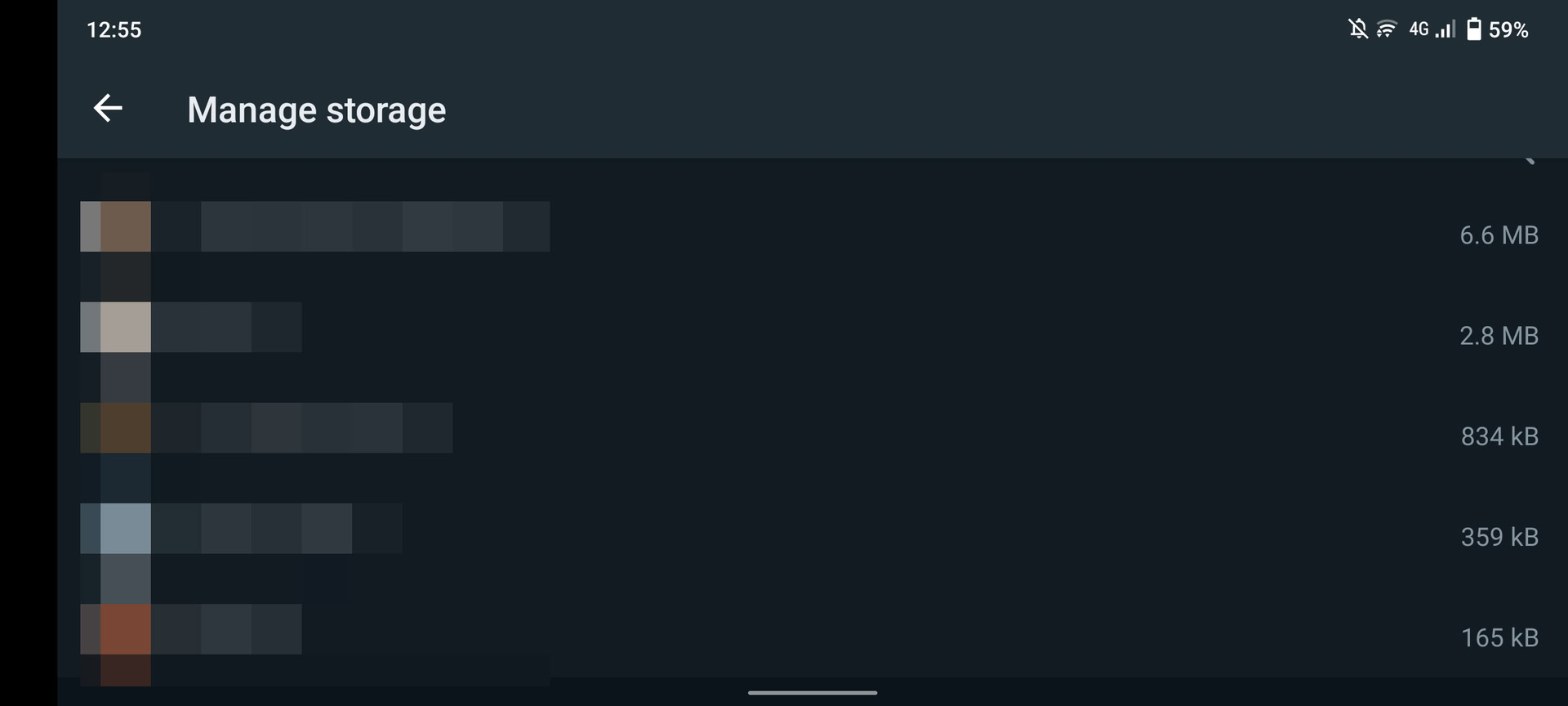
The manage storage functionality (Settings > Storage and data > Manage storage) can show some impressive stats. This feature allows you to view a ranking of storage used by contact or group. This is ranked by which contact or group uses the most storage on your phone.
Then clear those files from your storage
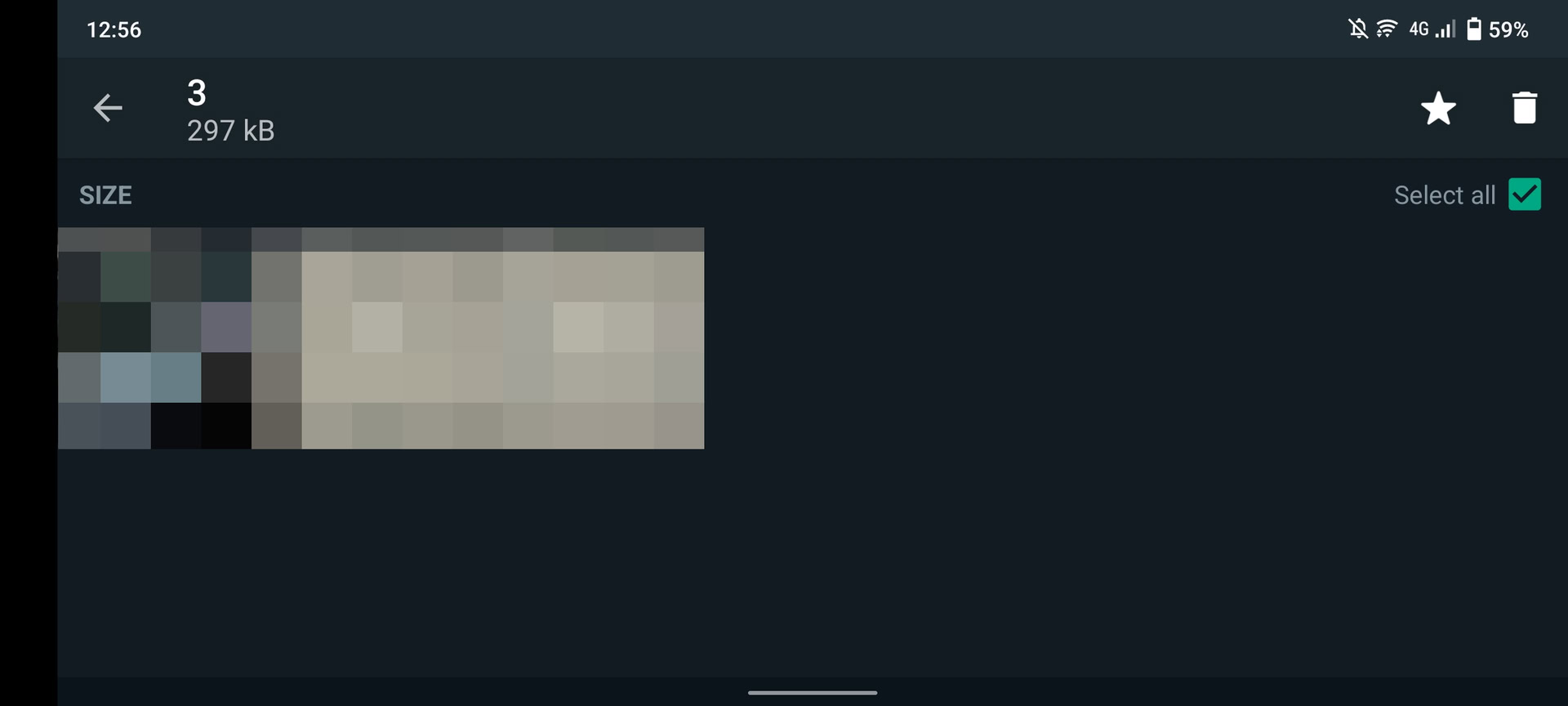
You can do more than look at the contacts who hog all the storage. You can choose to wipe these files from your phone if you want to. All you need to do is visit the manage storage section once again (Settings > Storage and data > Manage storage).
More reading: How to free up storage space on Android
You then need to tap on the desired chat, choose select all, and hit the bin icon in the top right to clear all the files in said chat. Alternatively, if you only want to delete a few files, you can tap and hold on each file in the chat to select it and then tap the bin icon in the top right to delete the selected file/files.
It’s not quite as handy as the old way of doing things, which allowed you to wipe files by category (video or photos). But it’s still a useful feature if your phone’s storage is clogged.
Request your account info
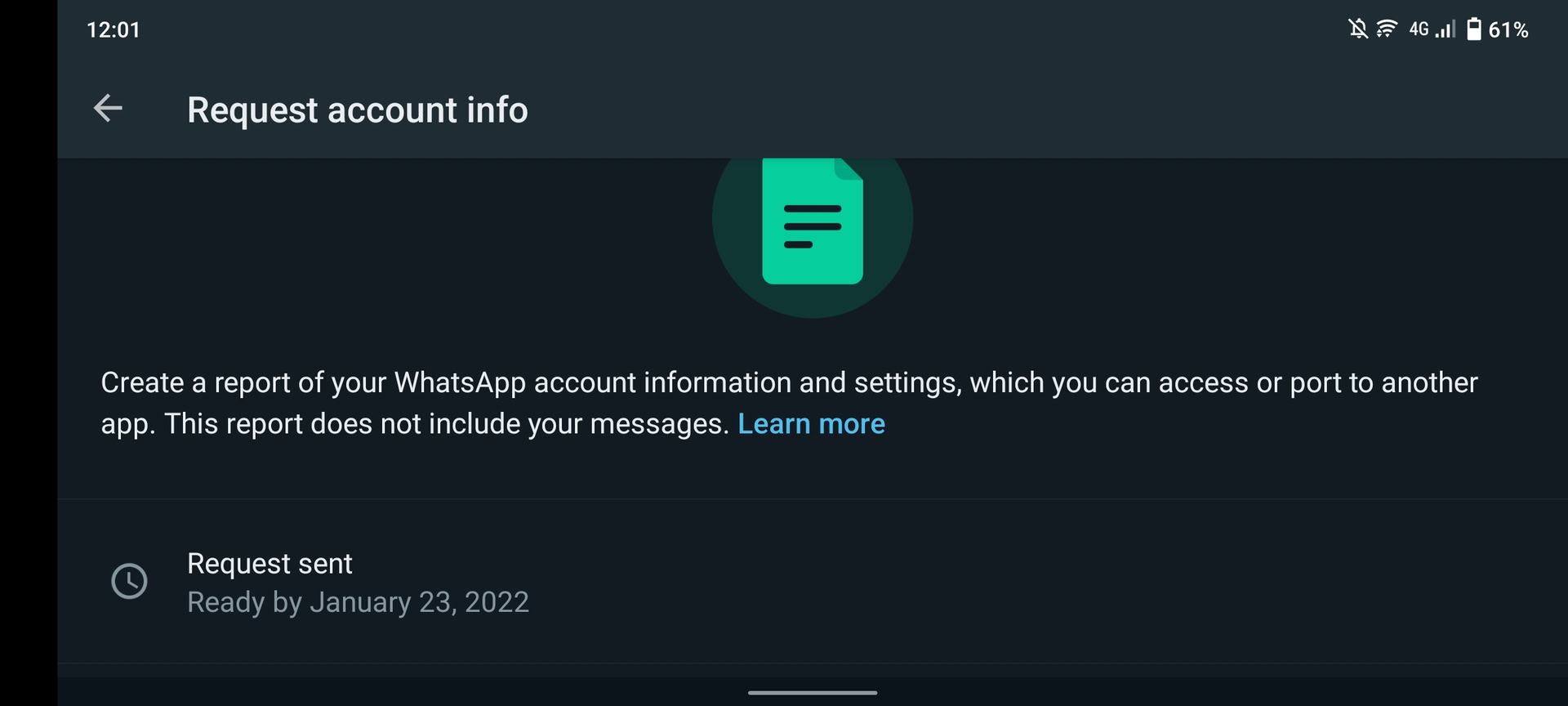
Like Facebook and Twitter, WhatsApp allows you to request a ZIP file of your account information and settings. This doesn’t include your messages, though, only collecting your profile photo and whether you agreed to that Facebook data policy, group names, and the like.
Read More On This Topic
Powered by Playwire
To do this, you’ll need to visit Settings > Account > Request account info, then tap Request report. It takes several days to get the report. However, the request will be canceled if you delete or re-register your account, or change your number or device.
You can’t view this file in WhatsApp, though, so try using another program on your phone or PC instead.
Email chat logs to yourself (or someone else)
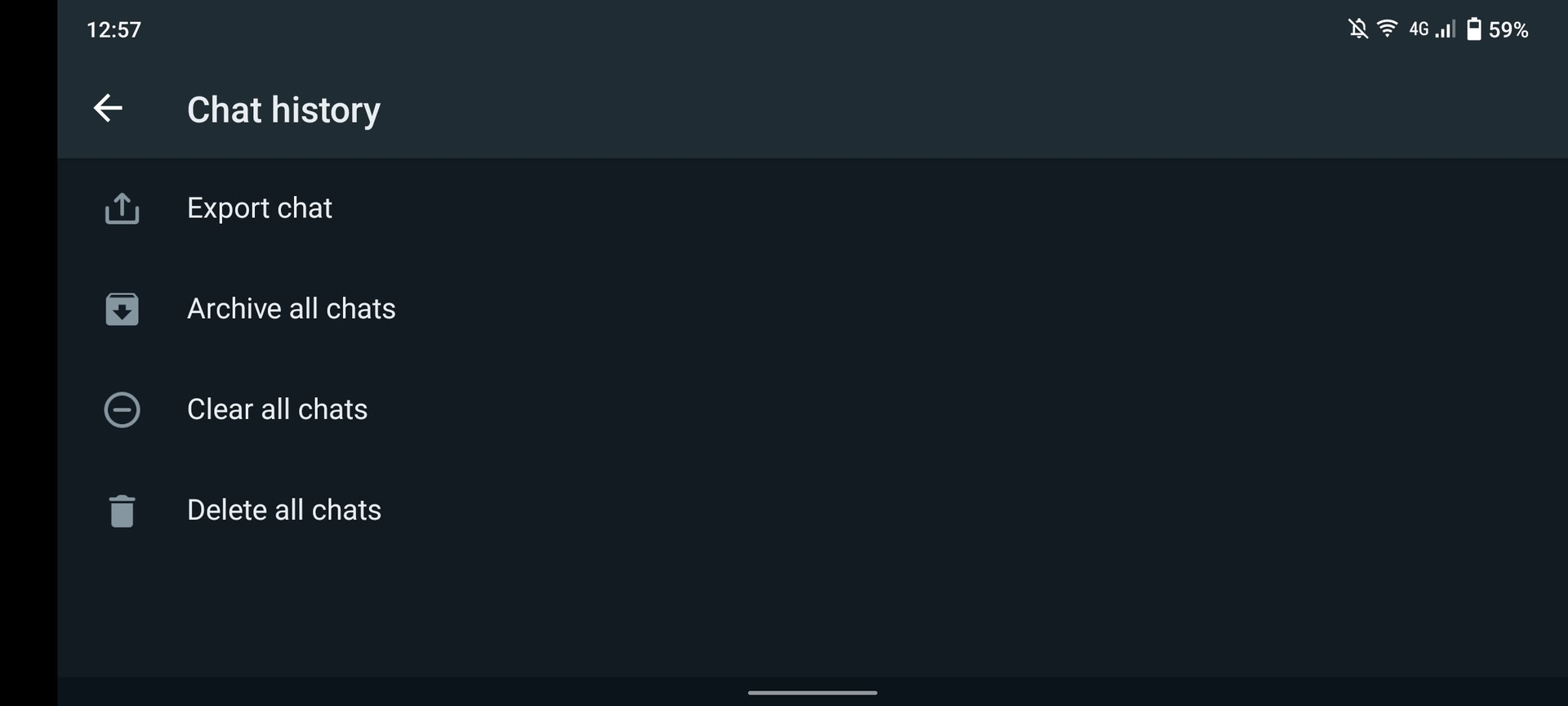
WhatsApp already lets you back up your chat history to the cloud, but what if you’d like to send a specific chat log to someone, or maybe need receipts? You can always email the chat log via WhatsApp.
To do this, you’ll need to visit Settings > Chats > Chat history, then tap Export chat. From here, your chat menu will pop up, allowing you to choose a specific contact or group’s chat history.
Once you’ve chosen the desired chat, WhatsApp will ask whether you’d like to include media or only send text and emojis. Choosing the latter option is advised to keep the final file size in check. Once you’ve made your decision, you’ll be able to select how you want to send the file. If you select Email, the chat log (in lightweight .txt format) will be automatically attached in a new draft message.
Activate two-step verification
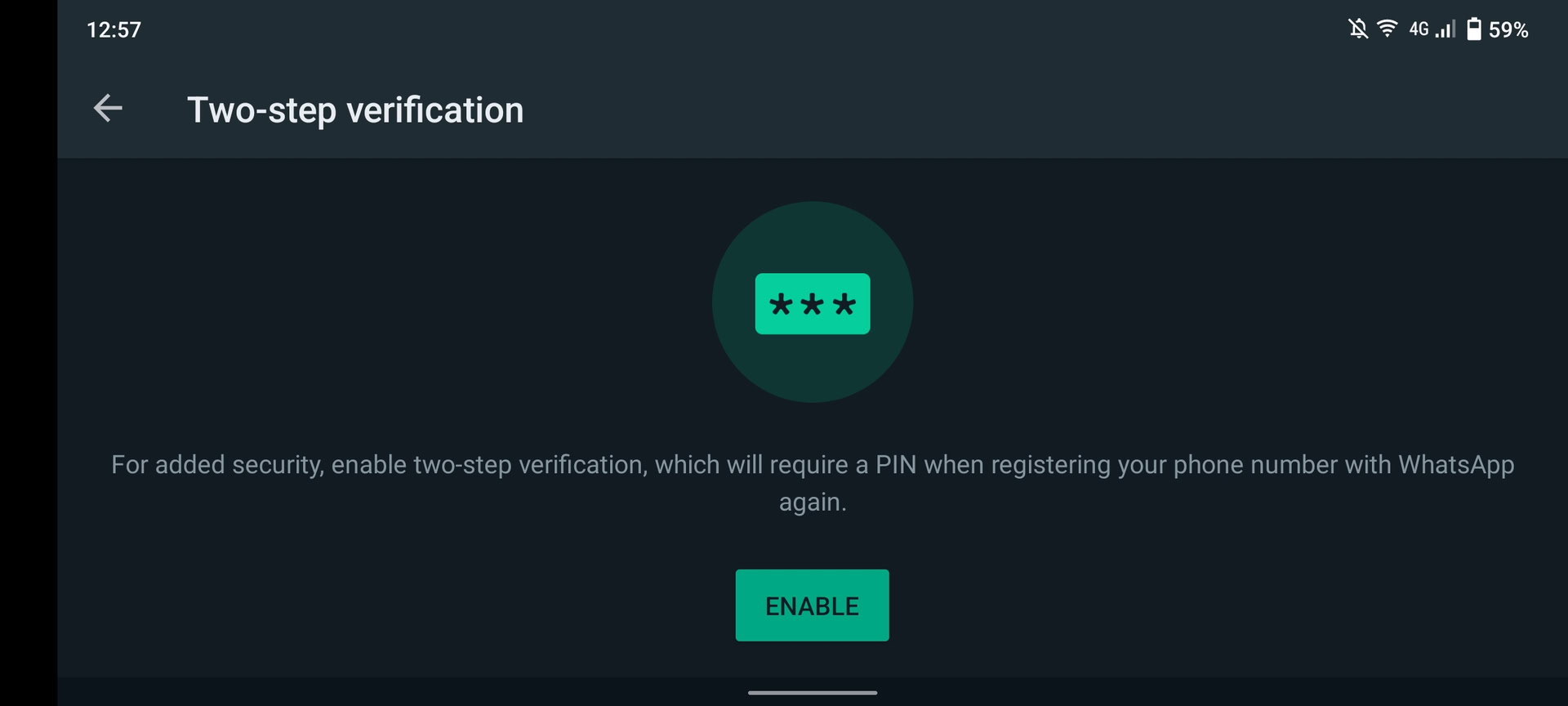
By default, WhatsApp asks for your number and a one-time pin when changing devices. However, enabling two-step verification means dodgy types can’t get away with accessing your account on a new phone, even if they have your SIM card.
To enable this, you have to visit Settings > Account > Two-step verification. From here, you’ll be prompted to create a six-digit pin for whenever you add WhatsApp to a new phone. You’ll also add your email address if you forget your PIN.
More on security: The best two-factor authenticator apps on Android
One rather massive oversight is that you don’t need to enter a PIN when disabling two-step verification from the original device. It does periodically ask for this PIN in general, though, but it means someone could swipe your phone and easily disable two-step verification.
Add a contact to your home screen
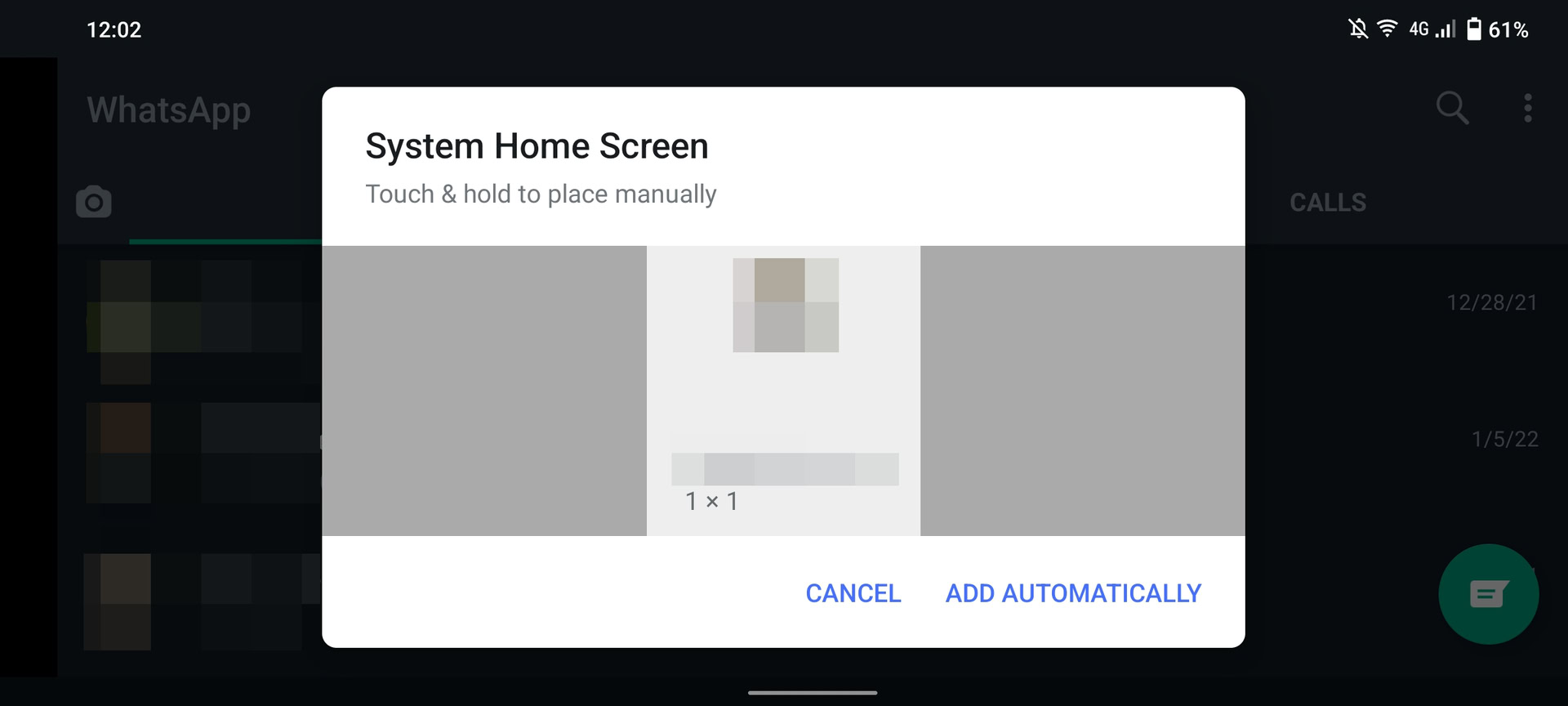
WhatsApp also lets you add contacts to your home screen — ideal for significant others and other frequently contacted people.
To add a chat to your phone’s home screen, open the contact or group in question, then tap the three-dot menu in the top right corner. From here, visit More > Add shortcut. You then simply tap Add automatically or hold the icon to place it on your home screen. This can also be done by going to the chats screen, holding down on the contact,
Disable read receipts
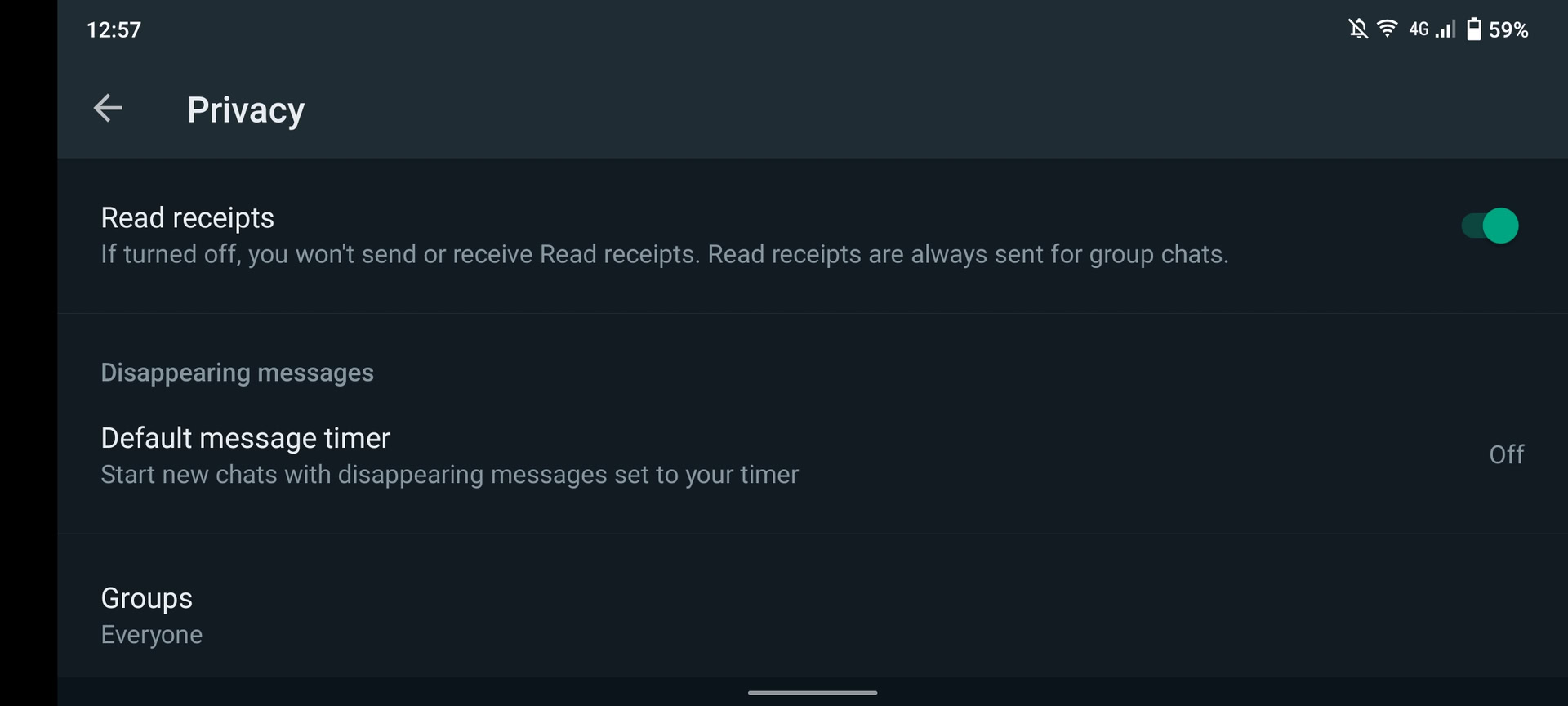
Ah, the infamous blue tick icon. For the uninitiated, this simply means that a message has been seen. If you prefer to dodge your contacts, you can disable read receipts (ergo the blue ticks) by visiting Settings > Account > Privacy and unticking the box labeled Read receipts.
Remember, this works both ways, so your contacts won’t see when you’ve read their messages, and you can’t see when they’ve read your messages.
See who read your group message
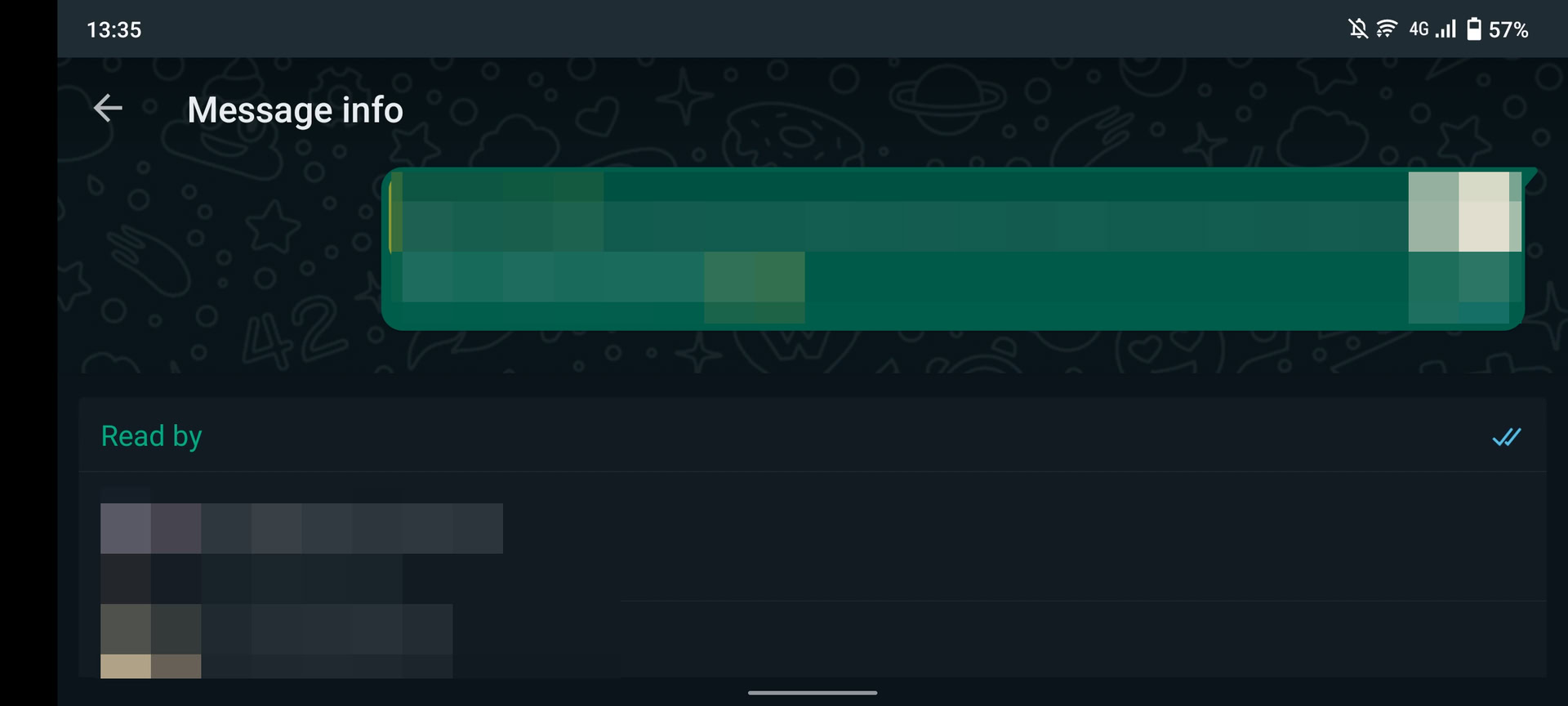
One of WhatsApp’s niftier tricks is the ability to see who read your group text. All you need to do is hold on your message to highlight it, tap the three-dot menu, then Info. From here, you’ll see who has and hasn’t viewed your dad joke, as well as when it was delivered to their device.
More WhatsApp reading: How to transfer WhatsApp to a new phone
It’s worth noting that someone may not appear on the list if they’ve disabled read receipts as above, or if they’ve blocked you.
Tweak the “last seen” feature
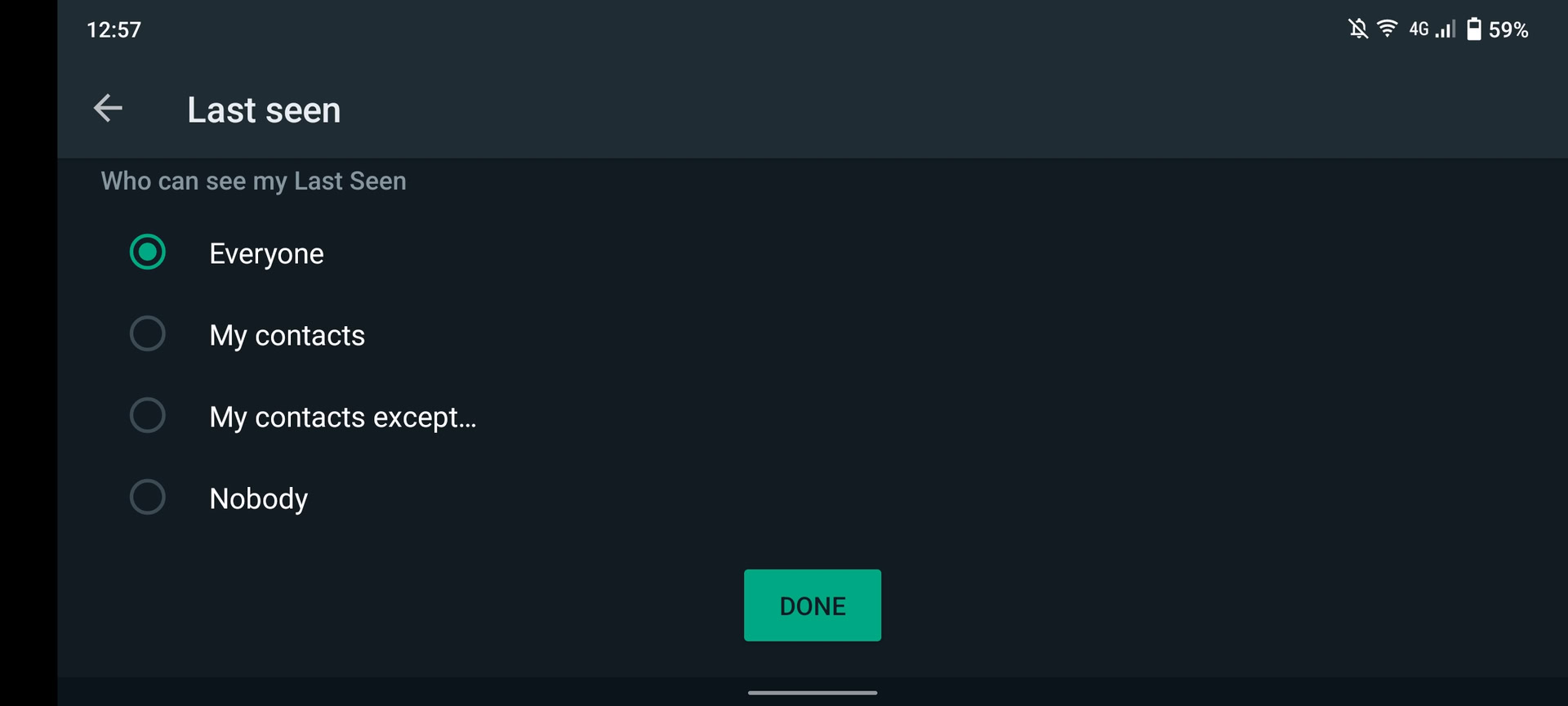
Have a stalker? You might want to tweak the Last seen function, which shows the last time you’ve appeared online.
To do this, you’ll need to visit Settings > Account > Privacy. You then want to tap the Last seen field and adjust it accordingly. This can be adjusted to:
- Everyone (everyone with your number can see when you’ve last appeared online)
- My contacts
- My contacts except…
- Nobody
Bonus tip: There are a few more WhatsApp tricks in the Privacy section to fight stalkers and general creeps, such as profile photo adjustments and the About field. Both of these sections can be tweaked, so they are viewable by everyone, only your contacts, or no one at all.
View your list of blocked contacts
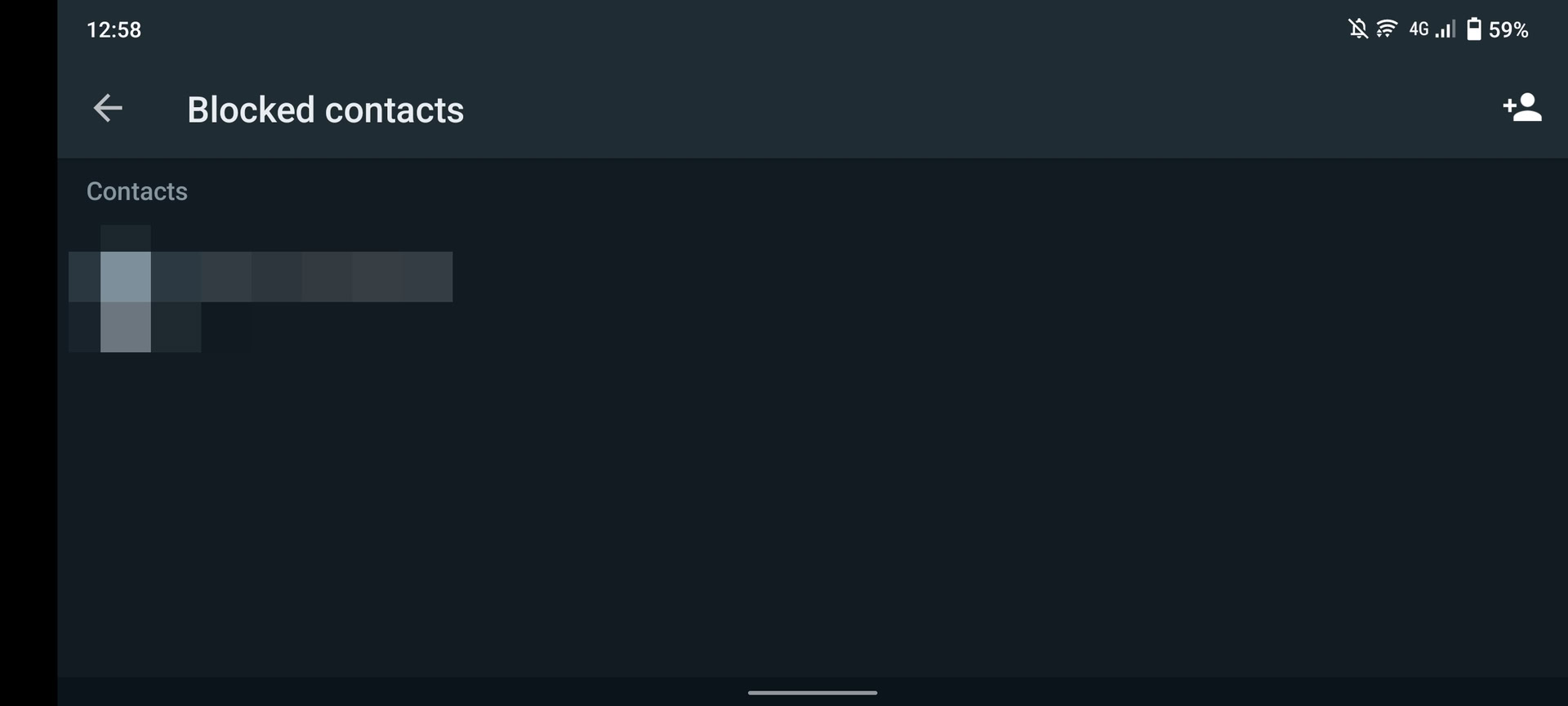
It’s your WhatsApp account, so feel free to ban whoever you want. But if you’re keen on seeing a full list of who you’ve blocked, visit Settings > Account > Privacy. You’ll need to scroll down to the Messaging section and tap Blocked Contacts.
You can also add contacts to the block list by tapping the icon in the top-right corner. It’ll take you to your Contacts page, where you can wield the ban hammer.
How to use live location tracking
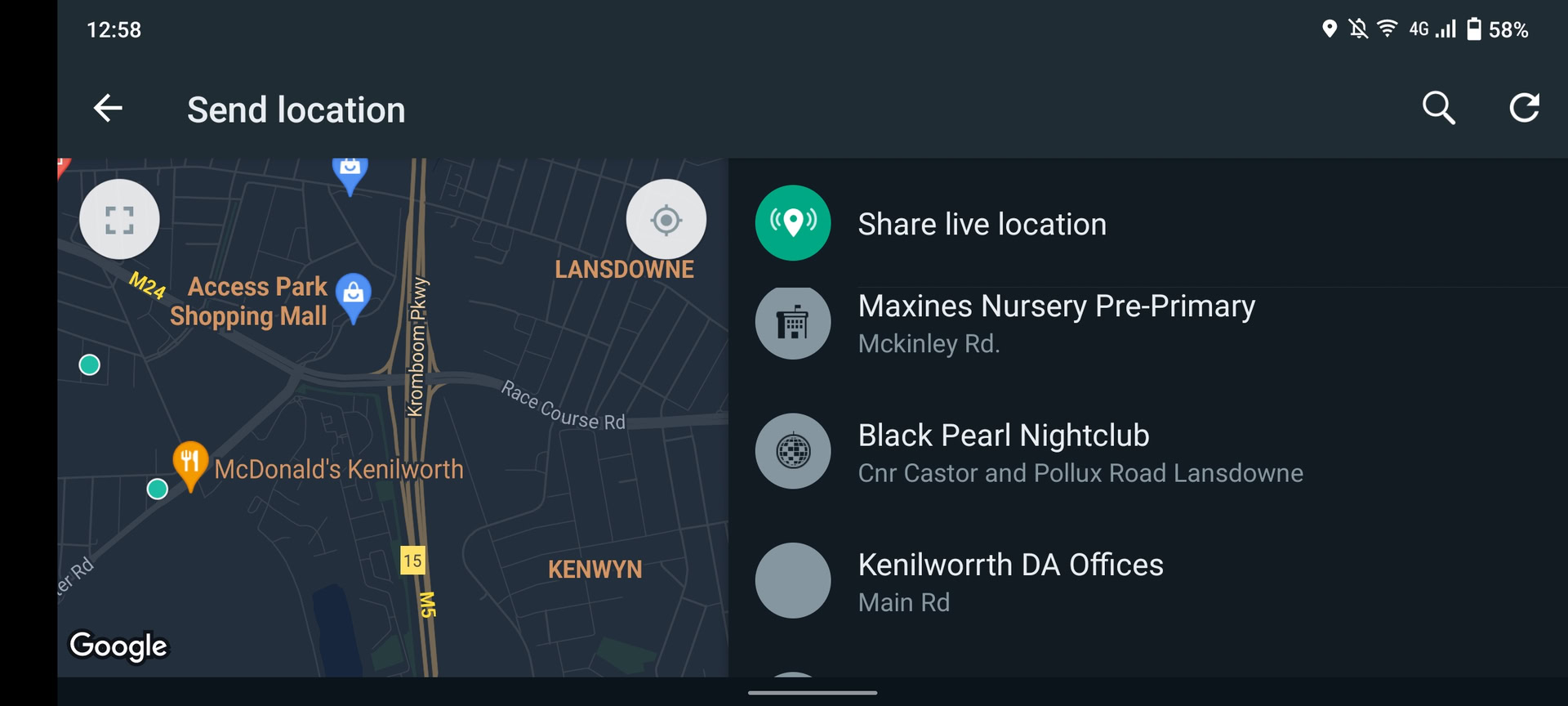
Sending a location pin is pretty simple in WhatsApp, as you tap the paperclip icon in the message field and choose Location. But what if you want your partner or parents to track your movement in real-time? Fortunately, this is indeed a thing, being one of the best WhatsApp tricks for parents and people with helicopter parents.
You can do this by tapping the paperclip icon. From there, tap Location > Share Live location, and specify a period of time to be tracked, ranging from 15 minutes to eight hours. Don’t worry, you can manually end location tracking at any time.
Create a custom notification for a contact
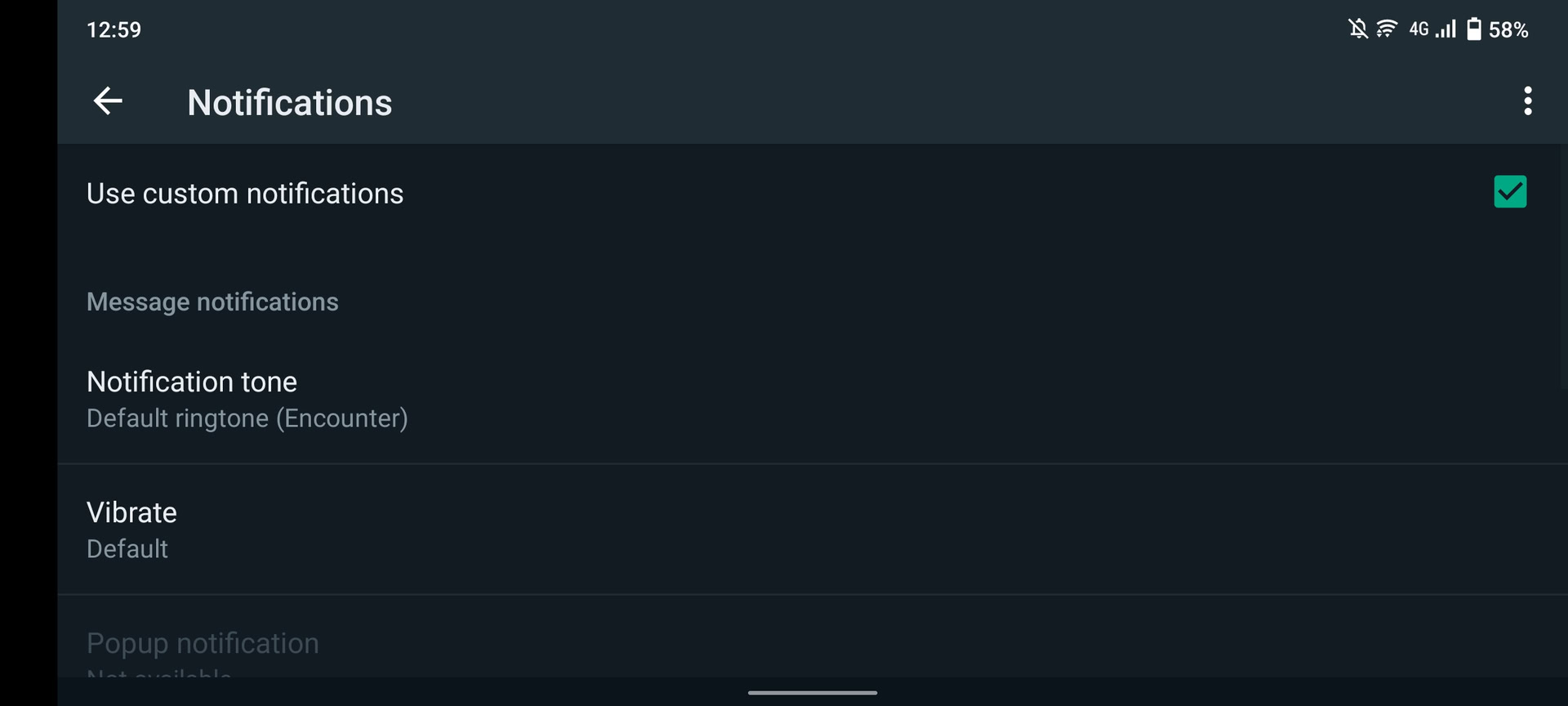
The average WhatsApp user has loads of contacts, so it’s understandable if you feel a little overwhelmed by message alerts. Fortunately, there’s at least one way to sort the wheat from the chaff, in the form of custom notifications.
To create a custom notification, you’ll need to enter a chat with the desired contact. From here, you have to tap their name at the top of the chat window and choose Custom notifications.
Once you’ve entered this menu, you’ll want to tick the box labeled Use custom notifications and scroll down to the next field to customize the alert. Customization options include changing the message tone and tweaking the LED notification color for the contact.
Mute contacts or groups
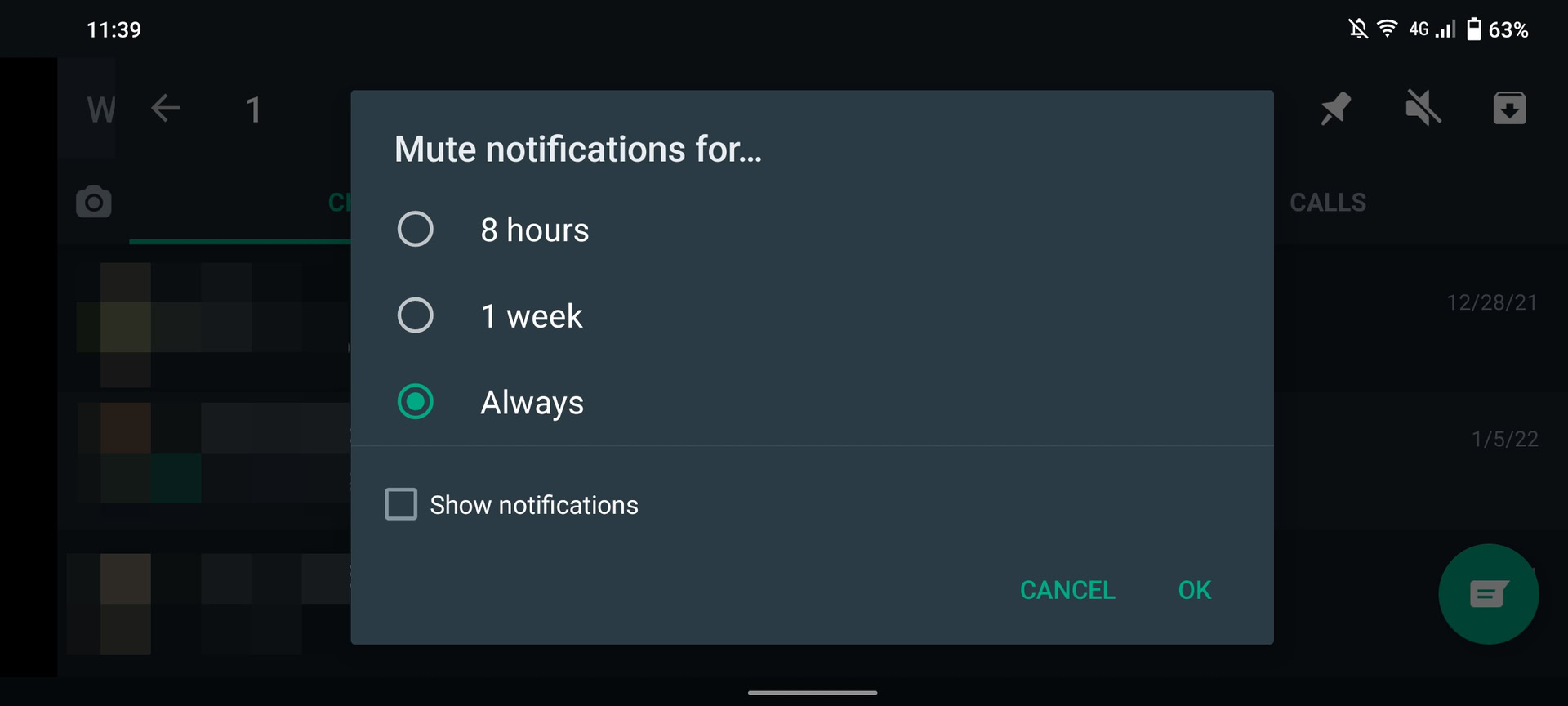
You probably have a group that constantly devolves into a constant stream of memes and viral videos. You could create a custom notification like in the previous tip, or you could just mute the group or contact.
To mute the contact or group in question, tap and hold them in the Chats menu. From here, you should see several icons in the top-right corner. Tap the mute icon (it’s a speaker with a line through it). You can then specify a mute period (eight hours, a week, always), choose whether you’ll still receive notifications, and tap OK.
Use WhatsApp on your PC
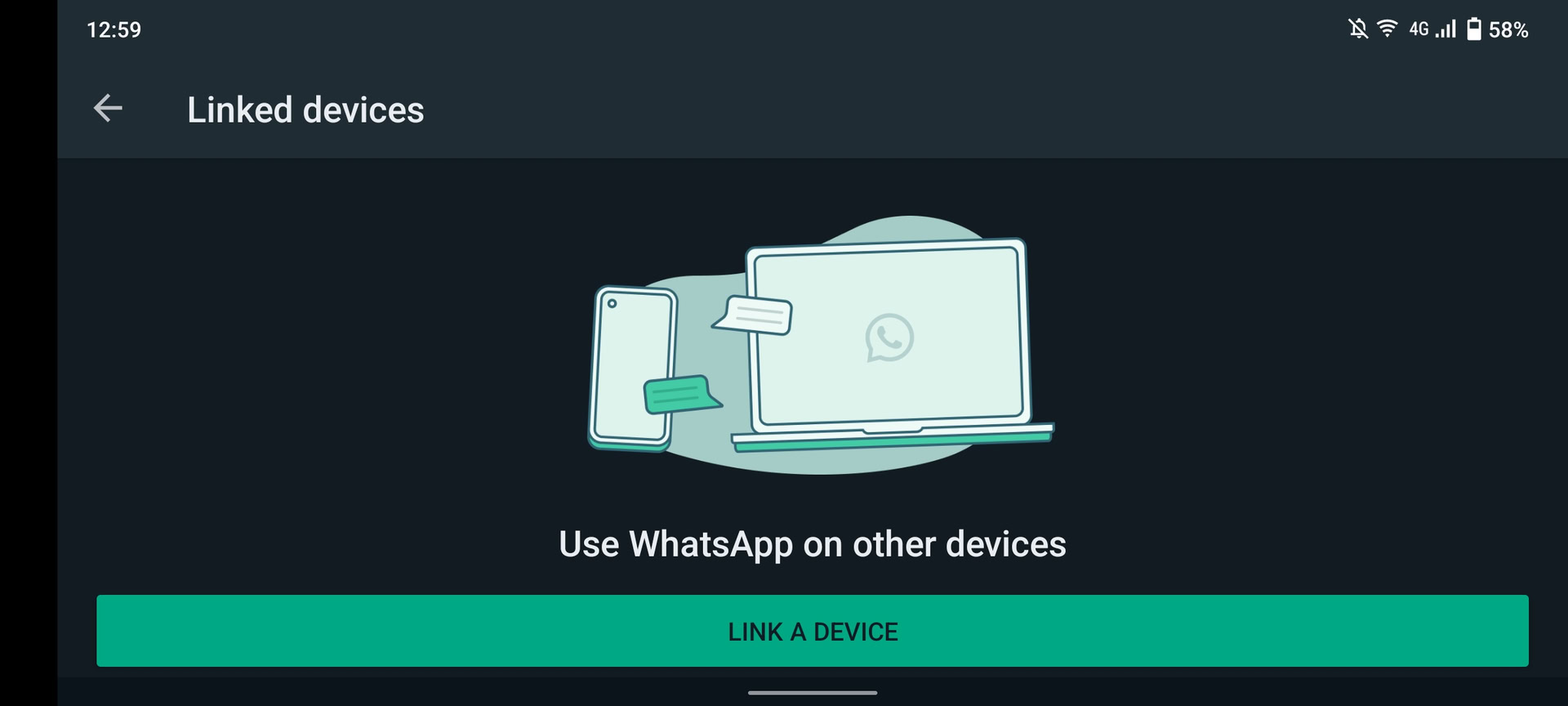
If you prefer a full-size keyboard or just like the convenience of the big screen, WhatsApp Web is one of the best features for you.
More IM coverage: 8 features WhatsApp should add from other messaging apps
To get things started, visit web.whatsapp.com on your computer. The website will display a QR code, which can be read on the WhatsApp mobile app. On your phone, tap the three-dot menu in the top right corner, then select Linked Devices > Link a Device to launch the QR code reader. Now, scan the desktop website’s QR code via your phone’s QR code reader, and that’s it.
Save things from your phone to your computer (and vice-versa)
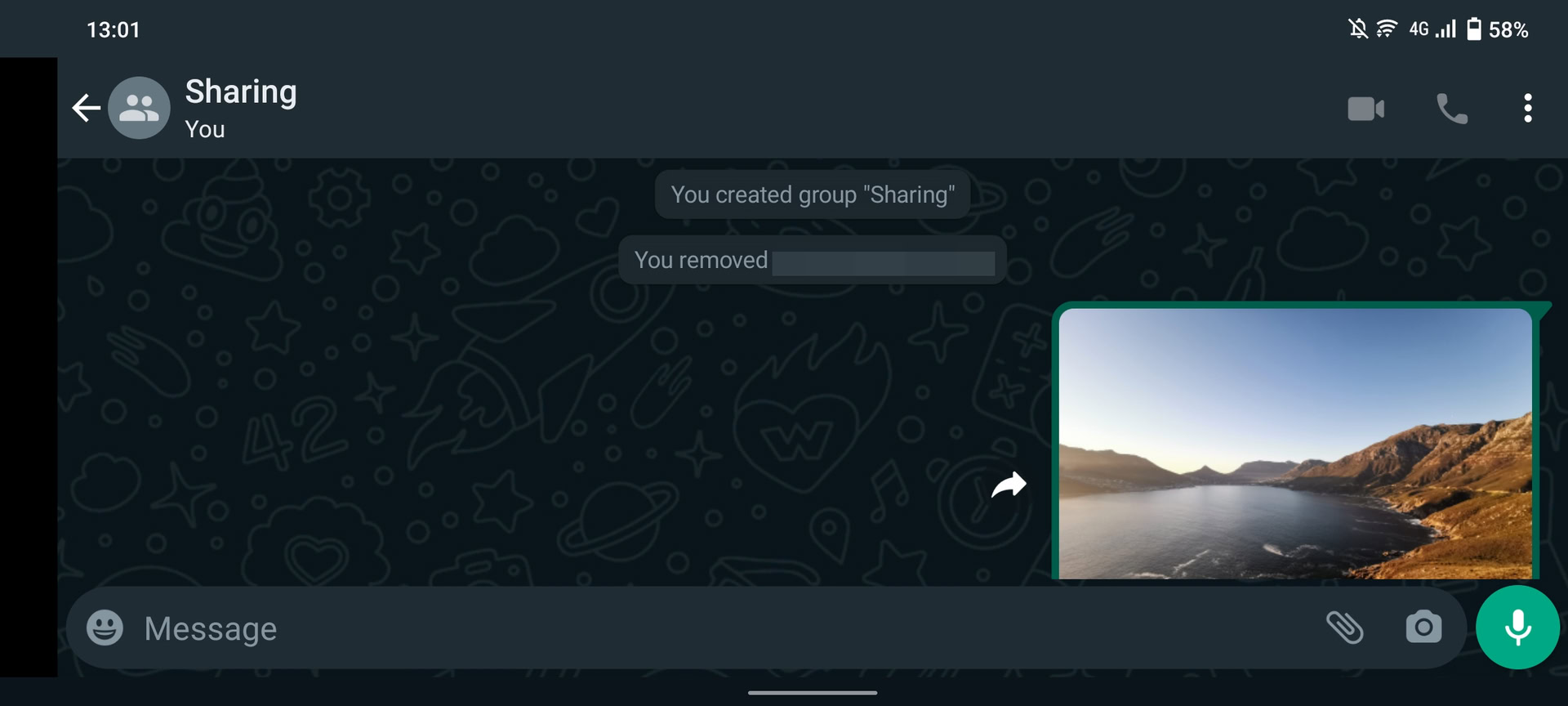
WhatsApp Web might not be as flexible as I’d like, but one of the cooler WhatsApp tricks is the ability to share stuff between your phone and PC.
If you’ve got two WhatsApp accounts, you can send the stuff from the second account to the one currently active on PC. Have a friend that doesn’t mind being the go-between? Then you can simply send files to them, hop on WhatsApp Web and click on their account to view/download the file. The inverse is true as well — you can send stuff from your PC (via WhatsApp Web) to your other WhatsApp account or long-suffering friend.
Another neat alternative noted by Twitter user Moshe Fasten is to create a group with one of your contacts, remove this contact, and then you have a private hub for sharing stuff. It’s not as cool or intuitive as Telegram’s saved content functionality, but it’s a start.
Sign up for beta access
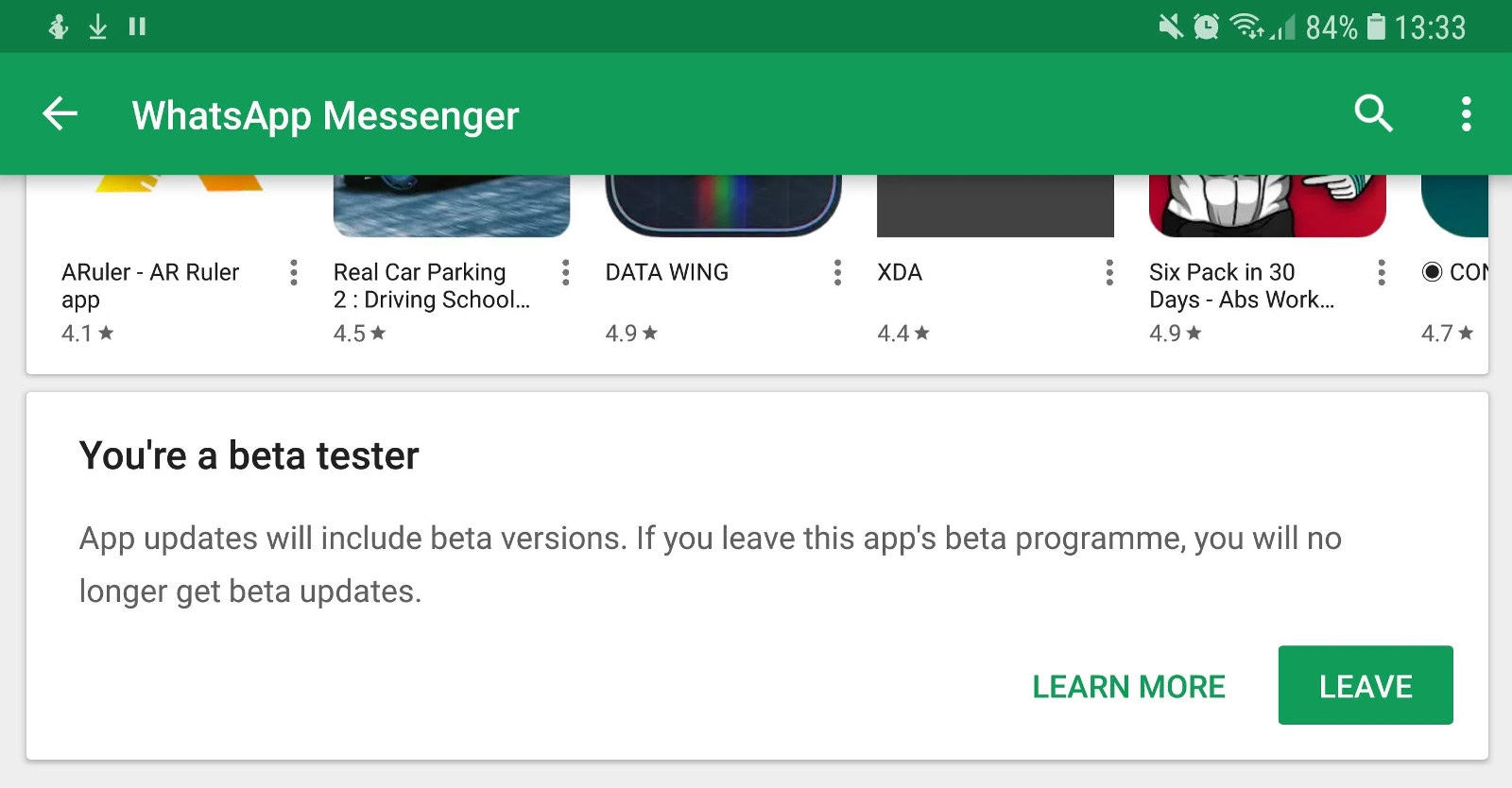
You’ll need to join the beta program to get new features first. This also means you risk encountering bugs and other flaws, so do keep that in mind.
To sign up for beta access, visit the WhatsApp page on the Google Play Store and scroll down to the Become a beta tester section at the bottom. Tap the I’m in button, and you will then be enrolled in the beta program. Updating to the beta version works just like a regular Play Store app update — you simply tap the update button to get the bleeding-edge version of the app.
If you’d like to leave the beta, you can do so at any time by tapping the Leave button that replaces I’m in, as seen in the above image.
Are there any other WhatsApp tips and tricks worth knowing? Let us know via the comments section below.
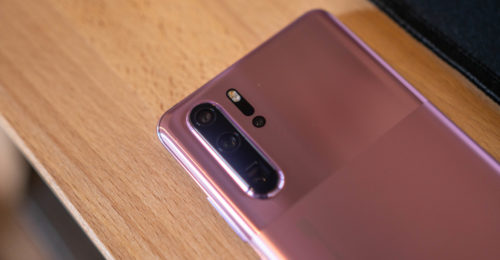


No comments:
Post a Comment
Please if u have any doubt confirm